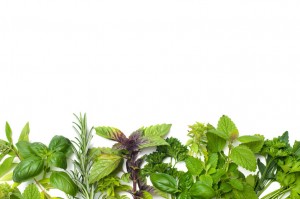Autumn’s arrival brings with it the first calendar warning that a frost could come at any time now. That first frost can mar the leaves of basil to spotty black and cut short the season of other delicious herbs. With another summer garden season coming to a close, you’re ready to harvest all those delicious greens and dry them for the winter. As you prune back those fragrant leaves, your markers for herbs will help you find them once again in the spring for the ones that you have left to re-seed.
If you’ve had a productive summer of snipping herbs here and there for salads, pastas, grilled meats and veggies and other dishes, then you might have a bounty of greens to snip back and save for winter. When you snip your herbs back, don’t snip them all the way to the ground. Gardeners suggest leaving at least a couple inches of growth on the plants so they have some energy in the spring to get a start.
meats and veggies and other dishes, then you might have a bounty of greens to snip back and save for winter. When you snip your herbs back, don’t snip them all the way to the ground. Gardeners suggest leaving at least a couple inches of growth on the plants so they have some energy in the spring to get a start.
After washing your herbs under the faucet, you can dry them in various ways. Fasten the ends together with a rubber band or twist tie and hang them upside down. You can even turn them into a decorative piece while they are drying by hanging them from a wall rack or coat rack, the curtain rods in the kitchen or breakfast nook or you can even take down some wall hangings and let your herbs be the art for a week or so. Don’t leave the herbs up much longer than they need to be to turn crisp enough to crumble or you’ll be adding some accumulated dust to your herb containers. Other old herb containers can be washed and re-used for your home harvest.
Your plant markers for herbs will help you find those shaved herbs once again in the spring. Some hardy herbs will spring back up while others may not. Do your research on which herbs need to be dug up and taken inside for the winter and which ones will re-seed and come right back with gusto!
Herbs tend to be healthiest when you continually prune them throughout the season. If you often cook with herbs, this will probably happen naturally. At some point, herbs that are left to grow will spend their energy putting on flowers and seeds rather than more bushy leaves. If you want those herbs to come back in the spring, you may want to prune much of the plant to keep a good harvest of herbs throughout the summer and then let some of the plant flower so that the seed will fall to the earth and produce the next year.
When spring 2015 arrives, use your markers for herbs, like ones created by Kincaid Plant Markers, to find the spots where last year’s herbs were sprouting. Our markers will prevent you from digging up tender roots if you’re putting in some new plants and will have you ready for a new season of spicing up your favorite foods.
